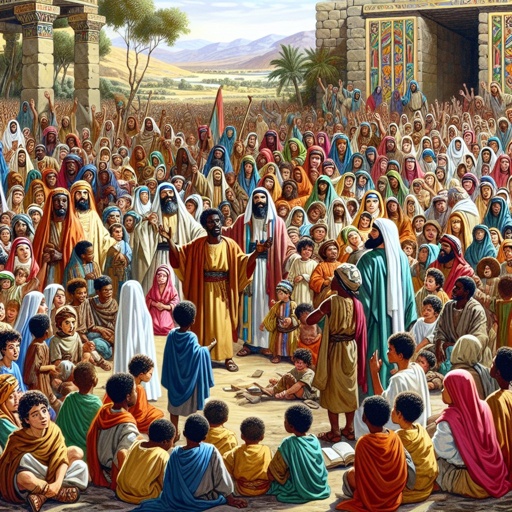Ezra 1 Artwork
"Now in the first year of Cyrus king of Persia, that the word of the LORD by the mouth of Jeremiah might be fulfilled, the LORD stirred up the spirit of Cyrus king of Persia, that he made a proclamation throughout all his kingdom, and put it also in writing, saying," - Ezra 1:1
Explore Ezra 1 through paintings, pictures, drawings, digital art, illustrations, wallpapers, photos, prints & more.

Ezra 7:1 - "Now after these things, in the reign of Artaxerxes king of Persia, Ezra the son of Seraiah, the son of Azariah, the son of Hilkiah,"

Ezra 1:9 - "And this is the number of them: thirty chargers of gold, a thousand chargers of silver, nine and twenty knives,"

Ezra 1:10 - "Thirty basons of gold, silver basons of a second sort four hundred and ten, and other vessels a thousand."

Ezra 7:12 - "Artaxerxes, king of kings, unto Ezra the priest, a scribe of the law of the God of heaven, perfect peace, and at such a time."

Ezra 10:1 - "Now when Ezra had prayed, and when he had confessed, weeping and casting himself down before the house of God, there assembled unto him out of Israel a very great congregation of men and women and children: for the people wept very sore."

Ezra 8:1 - "These are now the chief of their fathers, and this is the genealogy of them that went up with me from Babylon, in the reign of Artaxerxes the king."

Nehemiah 12:1 - "Now these are the priests and the Levites that went up with Zerubbabel the son of Shealtiel, and Jeshua: Seraiah, Jeremiah, Ezra,"

Ezra 10:5 - "Then arose Ezra, and made the chief priests, the Levites, and all Israel, to swear that they should do according to this word. And they sware."

Ezra 6:1 - "Then Darius the king made a decree, and search was made in the house of the rolls, where the treasures were laid up in Babylon."

1 Chronicles 4:17 - "And the sons of Ezra were, Jether, and Mered, and Epher, and Jalon: and she bare Miriam, and Shammai, and Ishbah the father of Eshtemoa."

Ezra 7:10 - "For Ezra had prepared his heart to seek the law of the LORD, and to do it, and to teach in Israel statutes and judgments."

Ezra 10:40 - "Machnadebai, Shashai, Sharai,"

Ezra 10:32 - "Benjamin, Malluch, and Shemariah."

Ezra 10:37 - "Mattaniah, Mattenai, and Jaasau,"

Ezra 10:38 - "And Bani, and Binnui, Shimei,"

Ezra 3:1 - "And when the seventh month was come, and the children of Israel were in the cities, the people gathered themselves together as one man to Jerusalem."

Ezra 4:1 - "Now when the adversaries of Judah and Benjamin heard that the children of the captivity builded the temple unto the LORD God of Israel;"

Ezra 2:20 - "The children of Gibbar, ninety and five."

Ezra 2:24 - "The children of Azmaveth, forty and two."

Ezra 2:54 - "The children of Neziah, the children of Hatipha."

Ezra 2:39 - "The children of Harim, a thousand and seventeen."

Ezra 2:18 - "The children of Jorah, an hundred and twelve."

Ezra 2:22 - "The men of Netophah, fifty and six."

Nehemiah 12:33 - "And Azariah, Ezra, and Meshullam,"

Ezra 10:39 - "And Shelemiah, and Nathan, and Adaiah,"

Ezra 10:35 - "Benaiah, Bedeiah, Chelluh,"

Ezra 10:36 - "Vaniah, Meremoth, Eliashib,"

Ezra 10:41 - "Azareel, and Shelemiah, Shemariah,"

Ezra 10:42 - "Shallum, Amariah, and Joseph."

Ezra 10:10 - "And Ezra the priest stood up, and said unto them, Ye have transgressed, and have taken strange wives, to increase the trespass of Israel."